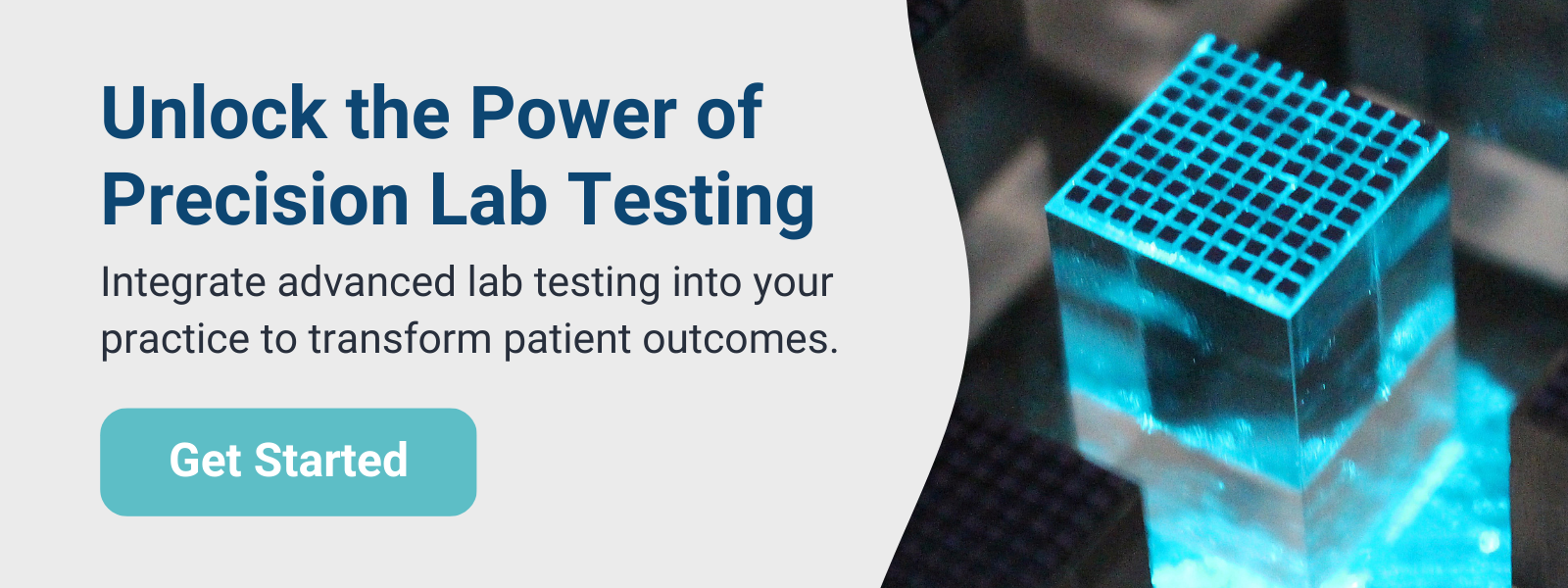The Evolution of Lab Equipment: From Test Tubes to Smart Machines
When it comes to diagnostic testing, the tools and technology are just as important as the science. Technology can either serve to catalyze or inhibit scientific growth.
Today, diagnostic testing for complex health conditions is incredibly precise, accurate, and fast thanks to advanced technology.
But lab testing was not always so efficient.
The progression of lab testing to the standard of excellence seen today could only occur due to impressive leaps in biotechnology over time.
Scientists and researchers began with simple test tubes and ended up with sophisticated smart machines that can test thousands of markers for multiple patients in precise detail simultaneously.
In this article, we’ll explore the evolution of lab testing technology within the biotechnology industry, culminating in the cutting-edge tools we use at Vibrant Wellness that are raising precision testing standards to new heights.
Early Lab Equipment: Test Tubes, Microscopes, & Centrifuges

One of the earliest tools used in labs was glassware, and in the late 19th century, researchers transformed glass into test tubes for the first time.
Test tubes are a fundamental tool for performing chemical reactions and analyzing samples.
To make test tubes and other custom equipment for their experiments, 19th-century chemists used glass blowing to shape the glass to their liking.
Test tubes became a lab staple and are still used today to store samples, perform small-scale chemical reactions, culture microorganisms, and more.
The microscope is another major lab testing tool that changed how we view the human body. Zacharias Janssen, a Dutch spectacle maker, invented the single-lens optical microscope in 1595.
The microscope allowed researchers to visualize the inner workings and structures of cells.
Later in the 20th century, microscopes became more powerful, allowing scientists to view the human body in great detail. The microscope led to the discovery of the cell and eventually, chromosomes and the study of genetics.
Today, microscopes are still used for cellular and molecular biology research, genetic engineering, diagnostics, and many other fields.
A final fundamental tool introduced in the early 20th century was the centrifuge. This machine allowed researchers to separate substances based on their density and, to this day, is highly relevant in biotechnology.
Centrifuges are used today in diagnostic testing for processes like separating blood components to test for specific biomarkers, preparing tissue and cell samples, and separating proteins.
The Advent of Automation

Lab testing technology gained significant traction in the second half of the 20th century with the help of automation. This allowed tasks that previously required manual effort to be done more efficiently and accurately with machines.
Additionally, automation meant that lab experiments could be reproducible, a crucial aspect of scientific study and growth.
Some examples of automation in the biotech industry that came about in the late 20th century include:
- Liquid handling systems
- Automated DNA sequencers
- Automated cell structure systems
- Data analysis software
The automation of these processes has completely changed the world of diagnostic testing. For example, automated liquid handling systems can handle tiny volumes of liquid with high precision. These are essential for diagnostic tests like PCR, ELISA, and cell cultures.
The Digital Age

In the 21st century, lab equipment is going through another transformation with the introduction of smart machines and digitization.
Smart machines take automation one step further and connect lab equipment to information technology systems. This allows the machines to link to networks and databases, seamlessly transfer data, and operate remotely.
There are many benefits to smart machines when compared to traditional testing methods:
- Increased Accuracy and Precision: Automated systems can reach a level of precision that humans can’t and reduce human error, meaning more precise and reliable results.
- Higher Throughput: Smart machines can analyze many samples simultaneously, increasing efficiency.
- Data Integration: Smart machines can connect to information technology systems, seamlessly transferring data to different networks.
- Advanced Diagnostics: Smart systems allow for higher complexity tests, detecting diseases in more detail and at earlier stages.
Smart machines don’t just collect data but can even interpret it using algorithms and software. With machine learning algorithms, these systems can analyze large data sets, identify patterns, and make predictions. This saves researchers significant time, enhancing efficiency.
Many of the smart machines developed today utilize artificial intelligence (AI) to study complex processes in intricate detail, including the complete protein profile of a cell or exploring protein structures on a genome scale.
AI is widely used for mechanisms like data storage, filtering, analysis, and sharing.
Additionally, processes like RNA and DNA sequencing and enzyme studies need AI software programs to enhance speed and reduce manual error.
In smart machines, AI works together with digitalization and robotics to carry out complex tasks like collecting and analyzing data.
These advanced machines allow researchers to analyze components of the human body, identify conditions, and predict disease development much more efficiently than ever before.
Modern Lab Technology in Diagnostics

As a lab that offers advanced precision testing for a wealth of health conditions, the Vibrant Wellness lab team use modern technology to deliver comprehensive diagnostic tests that are highly precise and accurate.
Mass Spectrometry
We use mass spectrometry to provide information about molecular structure. A mass spectrometry machine is used to ionize — or "smash" — molecules into gaseous form, sort the fragments, and then identify them based on their molecular weights.
This technology allows researchers to analyze complex patient samples with extreme precision, identifying and quantifying molecules with unparalleled accuracy.
Microarray Wafer Chips
Our team uses a first-of-its-kind customizable multiplex protein microarray for many panels to test antibody reactions to pathogens.
The benefits of the immunochip platform include:
- Silicon-based microchips that are laser-diced from antigen-immobilized wafers
- A customizable 24-well compatible plate containing 24 pillars, each with 100 microchips
- A high-resolution imager capable of detecting chemiluminescent signals from labeled antigen–antibody reactions at each microchip
These chips can analyze thousands of biomarkers simultaneously, enabling testing of multiple patients at once.
Some Vibrant tests that utilize the immunochip platform are the Tickborne Diseases, Neural Zoomer Plus, and Gut Zoomer panels.
Modern technologies allow us to offer advanced diagnostic services, paving the way for more accurate, precise, and comprehensive results—leading to better patient outcomes.
The Future of Lab Testing
This journey through the history and evolution of laboratory equipment elucidates the incredible influence technology has had in diagnostics and science at large.
Technology is not just a tool that simplifies the testing process but is necessary for growth and innovation in biotechnology, diagnostic testing, and many other fields.
With machines that can test for thousands of markers at once and analyze the microscopic building blocks of human beings in intricate detail, anything is possible in the world of diagnostics.
Regulatory Statement:
The general wellness test intended uses relate to sustaining or offering general improvement to functions associated with a general state of health while making reference to diseases or conditions. This test has been laboratory developed and its performance characteristics determined by Vibrant America LLC and Vibrant Genomics, a CLIA-certified and CAP-accredited laboratory performing the test. The lab tests referenced have not been cleared or approved by the U.S. Food and Drug Administration (FDA). Although FDA does not currently clear or approve laboratory-developed tests in the U.S., certification of the laboratory is required under CLIA to ensure the quality and validity of the tests.
 By
By



